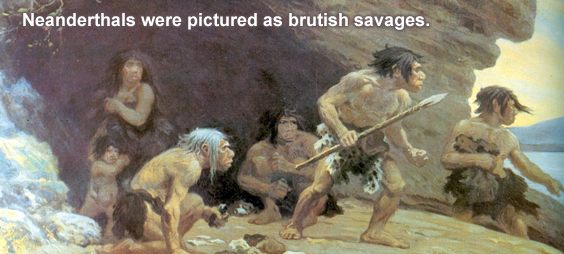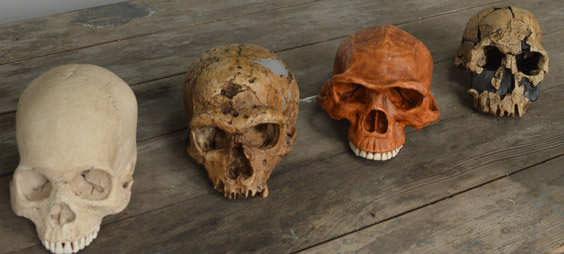
The BBC's Proof of Human Evolution
We'll quote the entire section from the BBC web page:
"The fossil record shows a gradual change from ape-like animals walking on all fours to bipedal creatures that gradually developed bigger brains.
"The first humans to leave Africa interbred with other hominin species, such as the Neanderthals. As a result, people of European and Asian descent carry Neanderthal genes in their DNA, but people of African descent don't.
"For instance, in the 1950s a British doctor called Anthony Allison was studying a genetic disorder called sickle-cell anemia, which is common in some African populations. People with the disorder have misshapen red blood cells, which don't carry oxygen around the body as well as they might.
"For those people, it was worth carrying the sickle-cell mutation.
"Allison discovered that the east African populations were divided into groups of lowland-dwelling people, who were prone to the disease, and people who lived in the highlands, who were not.
"It turned out that people carrying the sickle-cell trait got an unexpected benefit. It protected them from malaria, which was only really a threat in the lowlands. For those people, it was worth carrying the sickle-cell mutation, even if their children might be anemic.
"By contrast, people living in highland areas were not at risk from malaria. That meant there was no advantage to carrying the sickle-cell trait, so its otherwise-harmful nature had meant it disappeared.
"Of course, there are all sorts of questions about evolution that we still haven't answered.
"Stringer offers a simple one: what was the genetic change that allowed humans to walk upright, and why was that mutation so successful? Right now we don't know, but with more fossils and better genetics, we might someday.
"What we do know is that evolution is a fact of nature. It is the basis for life on Earth as we know it."
It looks like they have three "proofs" human evolution happened:
- (1) The fossil record
- (2) Mutations provided immunity to malaria
- (3) A declaration: evolution is a fact of nature

